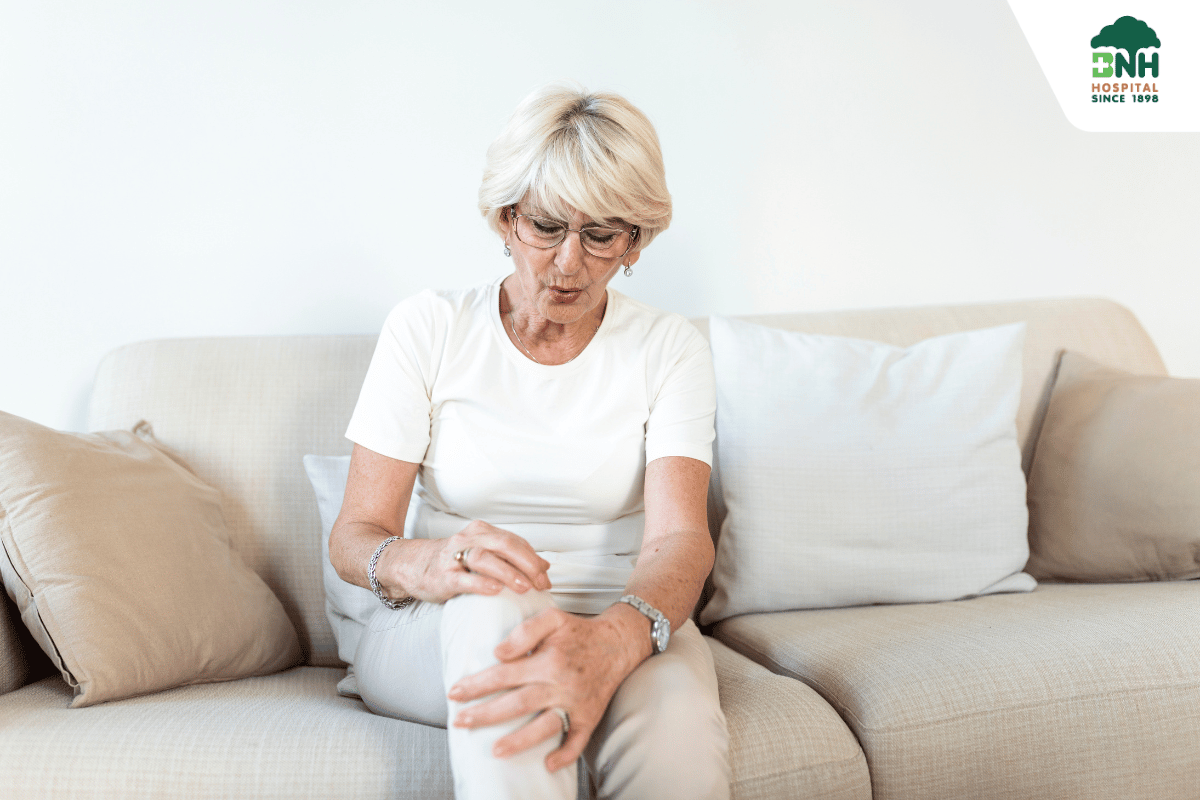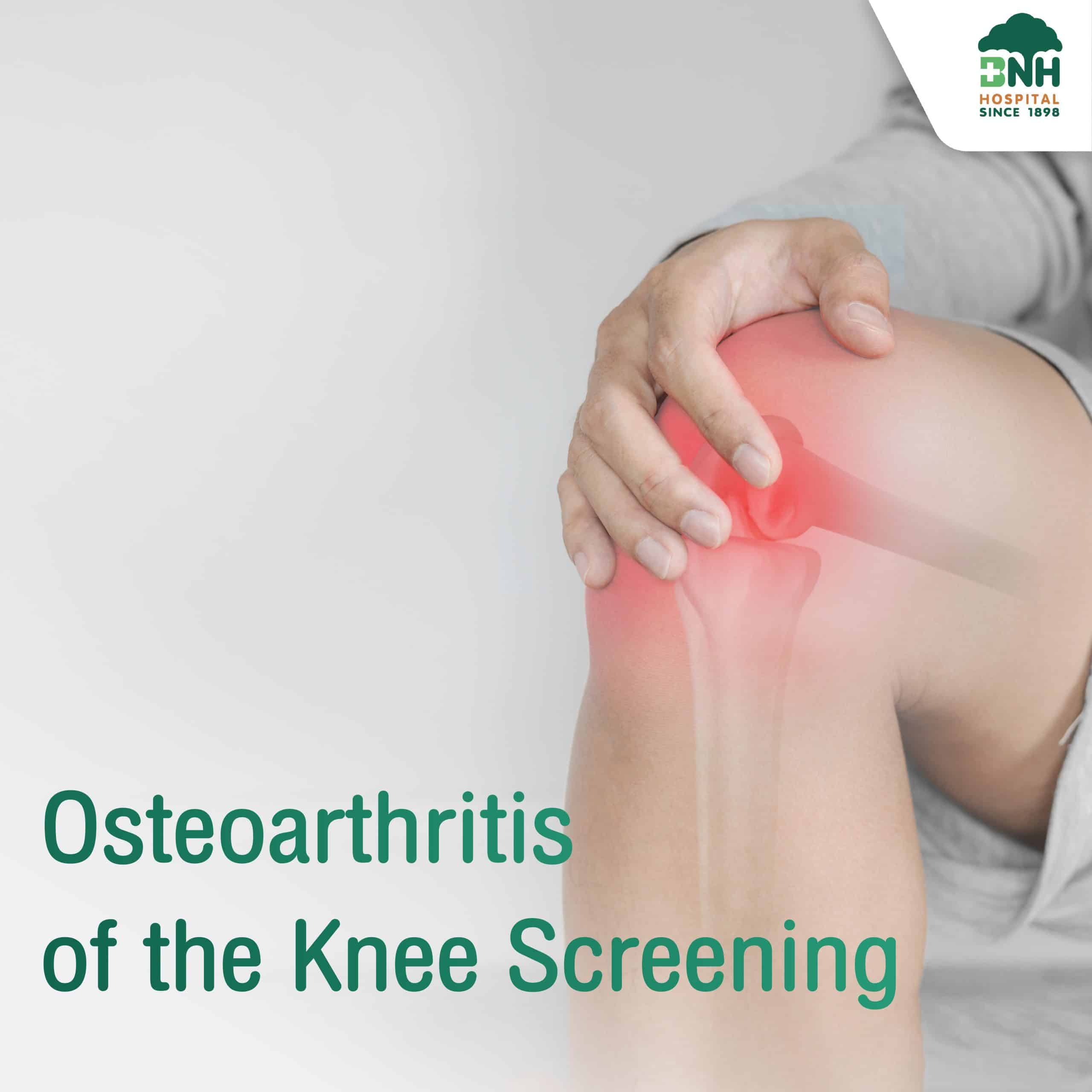
Osteoarthritis: Major Causes, Symptoms, and Prevention Methods

Causes of Osteoarthritis
Osteoarthritis may not happen to everyone, but people with the following factors are at higher risk:
• Aging
• Female
• Obesity (BMI>25)
• Repetitive or excessive impact to joints
• Heredity
• Fractured bones from accidents
• Arthritis
• Abnormalities in the joint area
BMI Calculator
Symptoms of Osteoarthritis
- Symptoms of osteoarthritis in the early stages may not be noticeable, but patients often feel stiffness in the knee or twisting in the joint from time to time, especially after being stationary or when a joint has been in one position for too long.
- In later stages, the pain gradually becomes more apparent. The disease process can take months or even years.
- In later stages, joint stiffness becomes more frequent and more pronounced, and there may be a squeaking sound, similar to the sound of rubbing sandpaper. At this stage, patients often experience pain, which may be completely different for each patient, such as mild pain, sometimes severe pain, or constant pain. When observed carefully, the pain may be associated with a specific activity, such as vigorous exercise, climbing stairs, sitting or squatting, and it is often observed that the severity of pain improves when these activities are reduced. Some patients may feel pain relocating or increasing in a particular area of the joint to other parts of the body.
- The pain that occurs leads some patients to adjust their movements by not extending or fully flexing the knee joint over time, which causes joint stiffness and dislocation of the knee flexion.
- Some patients with osteoarthritis may experience swelling and warmth in the knee, where the skin may become dark red or have bony protrusions in the joint, indicating that the knee joint is enlarged and joint mobility is more restricted. Inflammation in large, weight-bearing joints can make it difficult for the patient to walk underweight because of the pain.
How do I know if it's Osteoarthritis?
Visiting a doctor for a physical exam, as well as a radiographic examination, can help confirm if you have osteoarthritis.
Abnormalities that occur when it comes to Osteoarthriti
- The surface of the knee joint, which is cartilage, begins to deepen or makes the joint surface uneven, loses its smoothness, lubrication, and glossiness of the cartilage surface, causing joint movement to become stuck, stiff, or make a noise like rubbing sandpaper.
- The weight distribution of the articular surface is abnormal, as some areas carry more weight while others less, causing abnormally overloaded areas, rapid wear, and tingling pain.
- The membranes are irritated by fragments of cartilage within the joint, producing more inflammatory substances and producing more water in the joint, but of poor quality, causing pain, swelling, and warmth in the knee.
- Muscles around the knee joint: Due to the pain and inflammation of the knee joint, the patient uses the diseased leg less, resulting in less strength in the muscles around the knee joint. So when walking underweight, there is more impact on the joint surface.
- Some of the ligaments in the joints begin to sag as a result of the degeneration of that articular cartilage. As the ligaments stretch, the joints sway or become looser, thus causing more abnormal movement, whereby the knee to deteriorate faster.
- Leg axis: As a result of the ligaments sagging and the cartilage surface wearing out, the joint begins to oscillate in a more irregular direction, and when the patient’s weight increases, it encourages the ligaments to sag and makes the legs look more deformed, such as buckling or sagging in the degenerative knee. The body will gradually build up bone growth within the joint to help the bone around the knee joint to adjust to the more stable movement, which can lead to less flexion movement and thinner bone density in and around the joint, as most patients begin to walk less.

How to prevent Osteoarthritis
It is important to note that in order to slow down the onset of osteoarthritis of the knee, only patients with mild or moderate severity are able to perform these treatments with satisfactory results as follows:
- Avoid extreme knee bending positions (squatting, cross-legged and kneeling).
- Avoid frequent going up and down stairs.
- Control your body weight, avoid obesity.
- Always work hard on the muscles around the knee joint, especially the muscles in the front of the thigh.
- Take arthritis medication when needed or occasionally.
- In cases where the joint is deformed and/or shows more swing than normal when travelling, or performing longer activities than usual, a spring-loaded knee brace should be worn on both the inside and outside of the knee joint.
- In those with frequent knee pain or poor balance, a cane should be used to help when walking long distances or walking in uneven terrain (the walking stick should be held in the opposite hand of the sore knee).
“When osteoarthritis enters the final stage, the most effective treatment is knee replacement surgery, as it allows patients to recover from the pain and resume their daily lives.”
Written by Prof. Aree Tanavalee, M.D.
Knee and Hip Joint Surgeon Hip and Knee Arthroplasty BNH Shoulder & Joint Centre
FAQ by medical professionals

Osteoarthritis treatment is highly recommended because knee joint degeneration is a spontaneous condition that occurs as we age, similar to the onset of wrinkled skin. Patients with osteoarthritis of the knee experience physical disabilities, especially pain and the inability to perform daily tasks, which requires treatment. The goal of osteoarthritis treatment is to reverse the overall condition and relieve pain by strengthening the muscles surrounding the joint, and to keep the joint functioning to a satisfactory level, where you can exercise and perform daily activities that are appropriate for your age and condition.
If the doctor determines that a patient has osteoarthritis of the knee, but does not have any unusual symptoms, no special treatment may be necessary. In this case, the patient can preserve or maintain the deteriorated joint such that it can remain as is without causing further problems for as long as possible.
For patients with osteoarthritis of the knee with mild symptoms, the main treatment is control of the inflammation so that it does not interfere with daily life, by adjusting the knee function pattern, exercising, which strengthens your muscles, and preventing further inflammation, which slows the deterioration and wear & tear of the joints.
Nowadays, many patients with osteoarthritis of the knee prefer to take Glucosamine, a dietary supplement that does not cause any harm over the long term. Most doctors are of the opinion that if patients take these substances and their knee joint symptoms improve, they can continue to take them.

Osteoarthritis of the knee is a multifactorial condition, but it is generally associated with other joint degeneration, especially the spine and hip and weight-bearing joints, depending on the usage of the individual, including in the case where the knee joint has been deformed over a long period of time. This may place a greater burden on other joints, causing further deteriorate as well.

Generally, knee supports can help reduce pain during injury or inflammation by making the knee joints firmer and more stable. However, wearing supports for a long period of time will result in less exertion of the muscles, causing more weakness, which can result in the muscles supporting the front and back of the knees becoming less effective. Therefore, it is recommended to wear them temporarily, only to relieve pain, but not to prevent osteoarthritis.

In older people whose bone density begins to decline, taking calcium can help strengthen bones and reduce the pressure on their joints, which can slow down the onset of osteoarthritis.
At present, there are no empirical scientific data on herbs can treat osteoarthritis.
Experiences from patients
“Did a short 15K ride in Bangkachao this morning on my low-step bike. Easier to mount and dis-mount. After all, I am not 75 anymore as my wife told me.
Thank you to you and your teams for a super job, getting me to this point only 7 weeks after to my knee replacement surgery.”
“I have been using BNH for 35 years and have always been impressed by the standard and medical care – but todays experience was totally outstanding; efficient, professional, and caring by all staff but particularly nursing and support staff; and of course by Dr Worapoj who’s treatment – medical assessment and diagnosis; explanation and bedside manner was world class… very many thanks. “
Medical team information



Special Price!
Osteoarthritis of the Knee Screening Package (Knee X-Ray) by BNH Hospital 1,690 THB
Recommeded for:
- Overweight (BMI >25)
- Aged 40 and above
- Family history of osteoarthritis
- Have regular routines or activities that involve the knee joints
- History of knee injuries
- Bent knees
- Arthritis
- Knee pain





